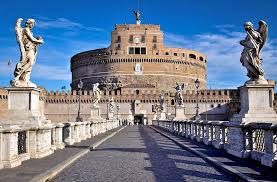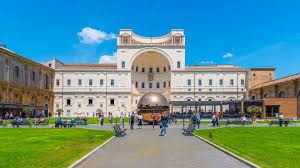Italy: Must-see museums in Rome

Rome: The city of Rome is an historical treasure trove. You could spend an entire lifetime here and still not manage to see everything it has to offer.

Paintings, sculptures, tapestries, frescoes, furnishings, jewellery and other artefacts across the ages make Rome one of the most important historical cities in the world.
But, where to begin? If you’re on a whistle-stop tour, here’s a list of the best museums to see. Save the rest for next time – because you’ll definitely be back once you’ve fallen for this addictive city.
Make sure you book your visit, wear comfortable, respectable clothing – and try to avoid the queues!
Vatican Museums: Housing Pope Julius II’s private collection, the sixteenth century Vatican Museums continue to attract more than 6 million visitors a year, primarily because they form the entrance to the Sistine Chapel.
Inside, you’ll find the Pio-Clementino Museum, which holds the Vatican’s most-valued Greek works of art, then the Apartment of Pius V, containing Flemish tapestries from the fifteenth and sixteenth centuries, a collection of medieval ceramics and another of medieval miniature mosaics.
This is followed by the Gallery of the Chandeliers, housing Roman replicas of Greek originals and enormous second century chandeliers. You’ll also discover art from global papal missions at the Ethnological Missionary Museum, maps painted in fresco on the walls of the Gallery of Maps and the Vatican’s first locomotive at the Historical Museum.
History and art buffs will particularly relish the Pio-Christian Museum, the Egyptian Museum, Chiaramonti Museum, Borgia Apartment, Raphael Rooms and the Sala Della Biga.
Galleria Borghese: The Borghese Gallery (Villa Borghese), in a beautiful mansion in the north of Rome, with the third largest park in Rome as its garden, boasts an impressive collection of art dating mainly from the fifteenth to eighteenth century.
Avid Caravaggio collector and Bernini sponsor Cardinal Scipione Borghese (nephew of Pope Paul V), amassed an extensive portfolio of both artists’ works, which are housed here at the Borghese.
You’ll also marvel at creations by Tiziano, Raphael, Rubens and Botticelli, as well as mosaics and sculptures from the antiquities as you wander through the mansion’s opulent rooms.
Capitoline Museums: Found near the Forum, in Piazza del Campidoglio, the museums consist of two imposing buildings: the Palazzo dei Conservatori and the Palazzo Nuovo, linked by the Galleria Lapidaria tunnel.
The museums were born when Pope Sixtus IV bequeathed bronze statues to the citizens of Rome in 1471, making these the oldest museums in the world.
Amongst paintings and sculptures by the greatest artists, you’ll find a few unique treasures, such as the original sculpture of the Capitoline Wolf, the 1277 Ritratto di Carlo I d’Angiò di Cambio, the first sculpture of a living person, and the enormous equestrian statue of Marcus Aurelius.
Palazzo Massimo alle Terme: For a Doctor Who-like journey back through time, spend a few hours at Palazzo Massimo. Built as a Jesuit boarding school in the late nineteenth century, the palace has four floors crammed with exhibits to amaze and fascinate.
From the earliest coins to funerary jewels to mummified remains to rare bronzes, this museum has something for everyone.
One of the main highlights is the triclinium of frescoes recovered from the villa of Livia and those of the Farnesina villa, making it feel more like a living museum, transported through space and time.
Palazzo Doria Pamphili: Found on busy shopping street Via del Corso, this seventeenth century palace was home to Rome’s most illustrious families, including the della Rovere, Aldobrandini and Pamphilj families.
In this palazzo, which is one of the largest and most magnificent in Rome, you will find the exquisite Galleria Doria Pamphilj, a work of art itself due to its opulent splendour. An incredible collection of paintings and sculptures are housed here, so make sure you leave enough time to wander and absorb the atmosphere and character of the palace’s many luxurious rooms.
The Pamphilj family still use the palazzo as a residence – the audio guide includes some interesting insights into what it’s like to live there, thanks to the input of Prince Jonathan.





